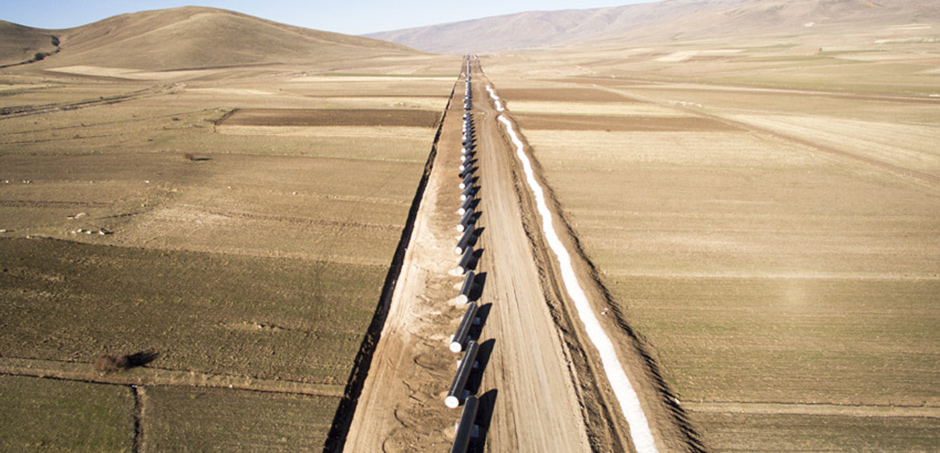- About
- Project
- Operation
- Media
- Announcement
- Reference Documents
- Contact
TANAP

The Trans-Anatolian Natural Gas Pipeline (TANAP) Project– one of the most significant indicators of the successful cooperation between the sister countries of Turkey and Azerbaijan in the field of energy – is the most important section of the Gas Corridor linking to the South Caucasus Pipeline (SCP) and the Trans Adriatic Pipeline (TAP). TANAP can claim to be the longest (1,811 km) natural gas pipeline and to have the largest diameter (56”) in Turkey, the Middle East and Europe, and was built to transport the natural gas extracted in Azerbaijan's Shah Deniz Region first to Turkey and then to Europe.
TANAP begins in the village of Türkgözü in the Posof district of Ardahan province on the Turkish-Georgian border, and passes through 20 provinces on its journey through Turkey, namely Ardahan, Kars, Erzurum, Erzincan, Bayburt, Gümüşhane, Giresun, Sivas, Yozgat, Kırşehir, Kırıkkale, Ankara, Eskişehir, Bilecik, Kütahya, Bursa, Balıkesir, Çanakkale and Tekirdağ, before completing the journey in the İpsala district of Edirne on the Greek border. At this point, TANAP is connected to the TAP Natural Gas Pipeline, which carries natural gas to European countries, thus improving the security and diversity of natural gas supply to our country and the European Union.
TANAP carries out its activities with the mission of constructing and operating a natural gas pipeline with a high transmission capacity in compliance with international standards for quality, occupational health and safety, and with social and environmental standards, with the aim being to transmit Azerbaijani natural gas to buyers in Turkey and Europe in a reliable and cost-effective manner. In doing so, TANAP contributes to the further development of the existing political and economic cooperation between Azerbaijan and the European Union – Azerbaijan having emerged as an alternative source of gas, and Turkey’s second-largest gas supplier.
By increasing the energy security of Turkey and Europe, TANAP brings Azerbaijan, Turkey and the EU closer together, reshaping the global geopolitical energy landscape with the potential it offers. This geopolitical feature of TANAP serves as a source of inspiration for future energy projects.





 Awards
Awards Agreements
Agreements TANAP
TANAP Gallery
Gallery